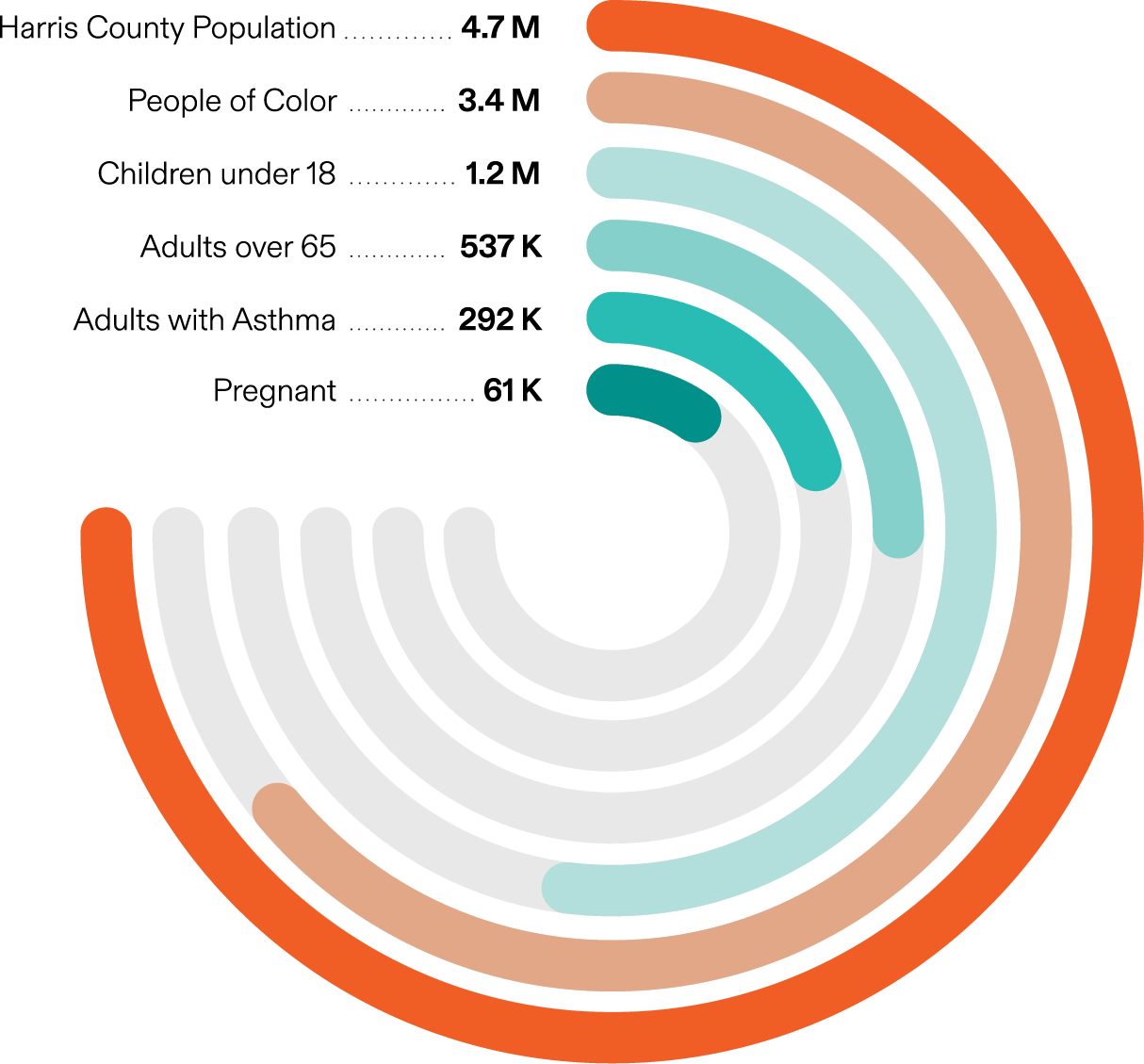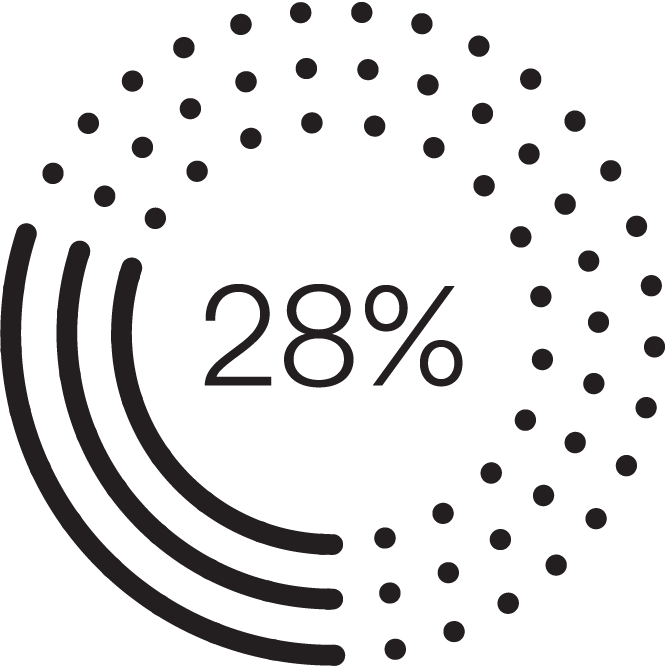For years, Houston, TX has touted its status as the energy capital of the world, having a dense concentration of oil refineries and petrochemical facilities due to its proximity to large oil resources and the Gulf of Mexico, important for helping grow and sustain the city’s thriving economy.
Houston is home to over 400 chemical and manufacturing facilities, over 150 concrete batch plants, and more than 140 metal recycling facilities that can expose residents to harmful air pollutants. Industry is expanding and Houston already releases more toxic air pollution than the top five metropolitan economies combined.

98.9%
of Texas population reside where PM2.5 concentrations are over safe levels of 5 μg/m³)
Houston is ranked 44th
for short-term particle pollution
Houston’s most polluted areas are in majority communities of color, segregated population, and low-income families.


Describes a mix of fine airborne particulate matter measuring 2.5 micrograms or smaller in diameter. PM2.5 is able to penetrate deep into the lungs and then into the bloodstream, potentially causing a wide range of short- and long-term health effects.
Ozone is a gaseous pollutant and component of smog formed in the atmosphere when sunlight causes nitrogen oxides (NO2) and organic substances (VOCs) to react. Like PM2.5, ozone can also cause respiratory infections, inflammation, and premature death.
Sulfur dioxide (SO2) is one of a group of highly reactive gases called sulfur oxides (SOX). Exposure to SO2 can affect the respiratory system, especially for people with asthma. SO2 emissions also come from extraction of metal from ore and burning high-sulfur fuels.

of 2021 greenhouse gas emissions were in transportation

of days in 2020 were above the annual limit in air quality levels
Air quality generally improved nationwide during the height of the pandemic, in part because fewer people were driving. But as people’s behaviors and activities return to normal, air quality nationally is worsening accordingly.
drive your car less…
use public transport…
don’t burn your garbage…
switch to electric or hand-powered lawn equipment…
use less energy…